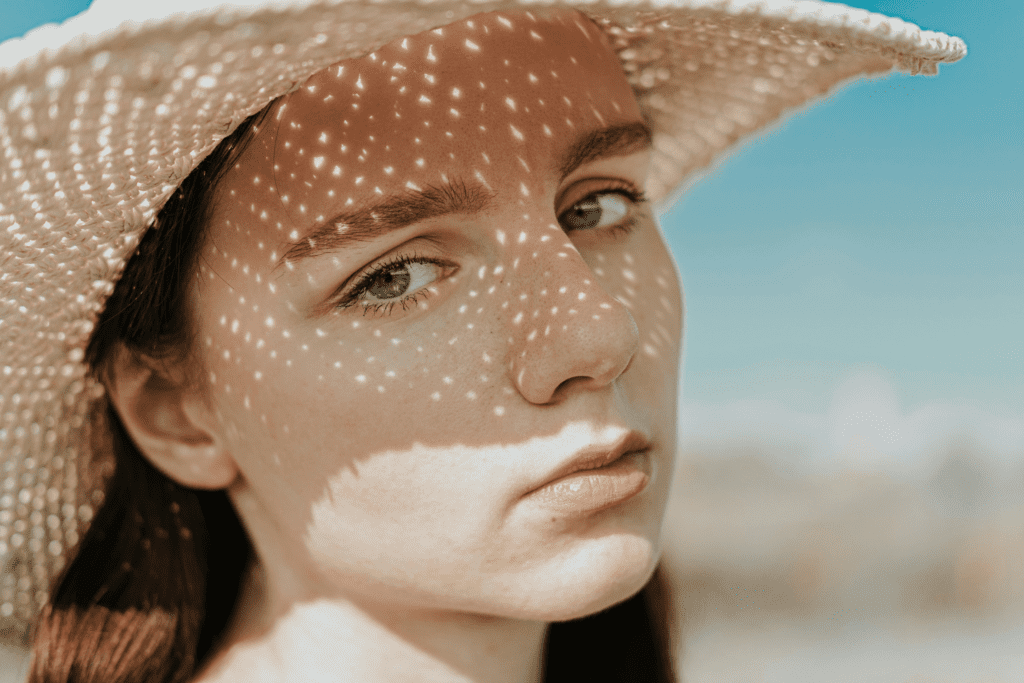- 1. Understanding Narcissism in the Context of Creativity
- 1.1 Defining Narcissism and Its Spectrum
- 1.2 The Role of Ego in Artistic Expression
- 1.3 Historical Perspectives on Narcissism and Creativity
- 1.4 Contemporary Views on the Narcissism-Creativity Link
- 2. The Double-Edged Sword: Benefits and Drawbacks of Narcissism in Creativity
- 2.1 Confidence and Risk-Taking in Creative Pursuits
- 2.2 Self-Promotion and Recognition in the Creative Industry
- 2.3 Innovation and Challenging Conventions
- 2.4 Emotional Intensity and Artistic Expression
- 3. Narcissism’s Impact on the Creative Process
- 3.1 Idea Generation and Conceptualization
- 3.2 Execution and Persistence
- 3.3 Feedback and Criticism
- 3.4 Collaboration and Artistic Growth
- 4. Case Studies: Narcissism in Famous Artists and Creators
- 4.1 Salvador Dalí: The Epitome of Artistic Narcissism
- 4.2 Kanye West: Narcissism in Modern Music
The intricate relationship between narcissism and creativity has long fascinated psychologists, artists, and researchers alike. In a world where self-promotion and individuality are increasingly valued, the line between healthy self-confidence and narcissistic tendencies often blurs. Recent studies have shown a 30% increase in narcissistic traits among young adults over the past two decades, raising questions about its impact on creative pursuits.
Narcissism, characterized by an inflated sense of self-importance and a deep need for admiration, can be both a driving force and a hindrance to artistic expression. On one hand, it fuels the audacity to create bold, innovative works. On the other, it can lead to self-obsession that overshadows the art itself.
As we delve into this complex topic, we’ll explore how narcissism influences the creative process, examining both its potential benefits and pitfalls. We’ll uncover the delicate balance between ego and artistry, and how this dynamic shapes the landscape of contemporary creativity.
1. Understanding Narcissism in the Context of Creativity
1.1 Defining Narcissism and Its Spectrum
Narcissism is more than just self-love; it’s a complex personality trait that exists on a spectrum. At its core, narcissism involves an excessive need for admiration, a grandiose sense of self-importance, and a lack of empathy for others. However, it’s crucial to understand that not all narcissistic traits are inherently negative.


-By Som Dutt from https://embraceinnerchaos.com
In fact, some degree of narcissism can be healthy and even necessary for creative pursuits. This “healthy narcissism” provides the confidence and self-belief often required to bring innovative ideas to life. It’s the fuel that drives artists to share their vision with the world, despite potential criticism or rejection.
On the other hand, pathological narcissism, often diagnosed as Narcissistic Personality Disorder (NPD), can be detrimental to both personal relationships and creative output. Individuals with NPD may struggle to accept criticism, collaborate effectively, or see beyond their own perspectives – all of which can hinder the creative process.
1.2 The Role of Ego in Artistic Expression
Ego plays a significant role in artistic expression. It’s the part of our psyche that gives us the courage to put our creations out into the world. A healthy ego allows artists to take risks, experiment with new ideas, and persevere in the face of setbacks.
However, an inflated ego can lead to creative stagnation. When artists become too focused on their own greatness, they may lose touch with the emotional core of their work. This self-obsession can result in art that feels hollow or inauthentic, lacking the depth and vulnerability that often characterizes truly impactful creations.
The challenge for creative individuals is to harness the power of their ego without letting it overpower their artistic vision. This delicate balance is what often separates great artists from those who struggle to make a lasting impact.
1.3 Historical Perspectives on Narcissism and Creativity
Throughout history, many renowned artists have exhibited narcissistic traits. From the self-aggrandizing poetry of Lord Byron to the larger-than-life personas of modern rock stars, narcissism has often been intertwined with creative genius.
In the Renaissance period, for instance, artists like Michelangelo and Leonardo da Vinci were known for their unwavering belief in their own abilities. This self-assurance allowed them to challenge artistic conventions and push the boundaries of their craft.
However, history also provides cautionary tales of artists whose narcissism ultimately overshadowed their work. The poet Ezra Pound, for example, saw his reputation tarnished by his extreme egotism and controversial political views, despite his significant contributions to modernist literature.
1.4 Contemporary Views on the Narcissism-Creativity Link
Modern research has shed new light on the relationship between narcissism and creativity. Studies have found that individuals with narcissistic traits often score higher on measures of creative achievement. This correlation suggests that certain aspects of narcissism, such as confidence and ambition, may indeed fuel creative success.
However, researchers also caution against oversimplifying this relationship. While narcissistic traits may help in the initial stages of creativity – generating ideas and seeking recognition – they can become obstacles in later stages that require collaboration, empathy, and openness to feedback.
The rise of narcissism in modern society has also sparked debates about its impact on collective creativity. Some argue that the current cultural emphasis on self-promotion and individualism may be fostering a generation of narcissistic creators, potentially at the expense of more collaborative and empathetic forms of art.
2. The Double-Edged Sword: Benefits and Drawbacks of Narcissism in Creativity
2.1 Confidence and Risk-Taking in Creative Pursuits
One of the most significant benefits of narcissistic traits in creativity is the boost in confidence it provides. Artists with a strong sense of self-belief are more likely to take risks and push boundaries in their work. This fearlessness can lead to groundbreaking innovations and fresh perspectives in art, music, literature, and other creative fields.
Narcissistic individuals often possess an unwavering faith in their abilities, which can be a powerful asset when facing the inevitable rejections and setbacks that come with creative pursuits. This resilience allows them to persist where others might give up, potentially leading to greater long-term success.
However, excessive confidence can also blind creators to their own limitations. When artists become too enamored with their own ideas, they may dismiss valuable feedback or fail to recognize areas for improvement. This can result in work that lacks depth or fails to resonate with audiences.
2.2 Self-Promotion and Recognition in the Creative Industry
In today’s competitive creative landscape, self-promotion is often crucial for success. Narcissistic individuals excel in this area, naturally drawing attention to their work and achievements. Their ability to captivate audiences and command respect can open doors to opportunities that might elude more modest creators.
Social media and digital platforms have amplified the importance of self-promotion, creating an environment where narcissism and technology intersect. Artists with narcissistic traits may find it easier to build a personal brand and cultivate a following, essential components of success in many creative fields.
The downside of this self-promotional prowess is the potential for style to overshadow substance. When the focus shifts too heavily towards the artist’s persona rather than their work, it can lead to a disconnect between the creator and their audience. This phenomenon is particularly evident in the world of celebrity culture, where fame and narcissism often intertwine.
2.3 Innovation and Challenging Conventions
Narcissistic creators often possess a strong desire to stand out and make their mark on the world. This drive can lead to innovative thinking and a willingness to challenge established conventions. By rejecting the status quo, these artists can introduce fresh ideas and perspectives that push their chosen medium forward.
Many revolutionary artistic movements throughout history have been spearheaded by individuals with narcissistic tendencies. Their unwillingness to conform and their belief in their own vision have led to paradigm shifts in art, music, and literature.
However, the flip side of this innovative spirit is the potential for change simply for the sake of being different. When narcissism drives the creative process, artists may prioritize shock value or novelty over genuine artistic merit. This can result in work that feels gimmicky or lacks lasting impact.


-By Som Dutt from https://embraceinnerchaos.com
2.4 Emotional Intensity and Artistic Expression
Narcissism often comes with intense emotions, which can be a powerful fuel for artistic expression. The heightened sensitivity and emotional reactivity common in narcissistic individuals can translate into passionate, evocative works of art. This emotional intensity can create a strong connection with audiences, leading to more impactful and memorable creations.
Moreover, the narcissistic need for admiration can drive artists to pour their hearts and souls into their work, resulting in pieces that are deeply personal and emotionally charged. This vulnerability, when channeled effectively, can produce art that resonates on a profound level with viewers or listeners.
However, the emotional volatility associated with narcissism can also be a double-edged sword. It may lead to erratic creative output, with periods of intense productivity followed by creative blocks. Additionally, the narcissistic tendency to view experiences through a self-centered lens can limit an artist’s ability to empathize with diverse perspectives, potentially narrowing the scope and appeal of their work.
3. Narcissism’s Impact on the Creative Process
3.1 Idea Generation and Conceptualization
Narcissism can significantly influence the initial stages of the creative process. The confidence and self-belief characteristic of narcissistic individuals often translate into a wealth of ideas and concepts. Their tendency to think highly of their own abilities can lead to bold, unconventional thoughts that might not occur to others.
This abundance of ideas can be a valuable asset in fields that require constant innovation. However, it’s important to note that quantity doesn’t always equal quality. While narcissistic creators may generate numerous ideas, they might struggle to discern which ones are truly worth pursuing.
Moreover, the narcissistic need for admiration can sometimes overshadow the authenticity of the creative process. Artists may find themselves gravitating towards ideas that they believe will garner the most attention or praise, rather than those that genuinely inspire them or hold deeper meaning.
3.2 Execution and Persistence
When it comes to executing creative ideas, narcissistic traits can be both a blessing and a curse. On one hand, the unwavering self-belief of narcissistic individuals can provide the motivation and persistence necessary to bring challenging projects to fruition. They’re often willing to invest significant time and effort into their work, driven by the belief that the end result will be exceptional.
This persistence can be particularly valuable in creative fields where success often comes after multiple failures or rejections. Narcissistic creators may be better equipped to weather these setbacks, maintaining their confidence and drive in the face of adversity.
However, narcissism can also hinder the artistic process in several ways. The perfectionist tendencies often associated with narcissism may lead to endless revisions and an inability to complete projects. Additionally, narcissistic individuals may struggle to accept guidance or collaboration, potentially missing out on valuable input that could enhance their work.
3.3 Feedback and Criticism
One of the most challenging aspects of creativity for narcissistic individuals is dealing with feedback and criticism. The ability to receive and incorporate constructive criticism is crucial for artistic growth, but it’s an area where many narcissistic creators struggle.
Narcissistic traits often include a hypersensitivity to criticism and a difficulty in acknowledging personal flaws or mistakes. This can lead to defensive reactions when receiving feedback, even when it’s well-intentioned and potentially beneficial. As a result, narcissistic artists may miss out on opportunities to refine and improve their work.


-By Som Dutt from https://embraceinnerchaos.com
Moreover, the narcissistic need for admiration can create a skewed perception of one’s own work. Artists may become so enamored with their creations that they’re unable to view them objectively or recognize areas for improvement. This can lead to stagnation in their artistic development and a disconnect between their self-perception and audience reception.
3.4 Collaboration and Artistic Growth
Collaboration is often a key component of creative success, but it’s an area where narcissistic tendencies can create significant challenges. The self-centered nature of narcissism can make it difficult for individuals to truly engage in collaborative processes, where compromise and shared vision are essential.
Narcissistic creators may struggle to acknowledge the contributions of others or may attempt to dominate collaborative projects. This can lead to conflicts within creative teams and missed opportunities for synergistic creation. The inability to fully engage in collaboration can limit an artist’s exposure to diverse perspectives and techniques, potentially stunting their artistic growth.
However, it’s worth noting that some narcissistic individuals can be charming and charismatic, which can be beneficial in certain collaborative settings. If they can harness these traits while keeping their ego in check, they may be able to inspire and lead creative teams effectively.
4. Case Studies: Narcissism in Famous Artists and Creators
4.1 Salvador Dalí: The Epitome of Artistic Narcissism
Salvador Dalí, the renowned surrealist painter, is often cited as a prime example of narcissism in the art world. Known for his flamboyant personality and outrageous statements, Dalí once famously declared, “I am not strange. I am just not normal.” This unapologetic self-promotion and belief in his own exceptional nature were integral to his artistic persona.
Dalí’s narcissism manifested in his art through recurring self-portraits and autobiographical elements. His work “The Persistence of Memory” is not only a masterpiece of surrealism but also a reflection of his belief in the enduring nature of his own legacy.
While Dalí’s narcissism undoubtedly contributed to his iconic status, it also led to controversies and criticism. His later works were often dismissed as mere publicity stunts, overshadowing his earlier artistic achievements. This illustrates how unchecked narcissism can potentially overshadow an artist’s work.
4.2 Kanye West: Narcissism in Modern Music
In the contemporary music scene, Kanye West stands out as a figure whose narcissism has both fueled his success and caused significant controversies. West’s confidence in his abilities has led to groundbreaking music and fashion ventures. His willingness to challenge industry norms has resulted in innovative albums that have redefined hip-hop.
However, West’s narcissistic tendencies have also led to public outbursts and statements that have often overshadowed his artistic achievements. His behavior exemplifies how narcissism can be both a creative catalyst and a potential career liability.




